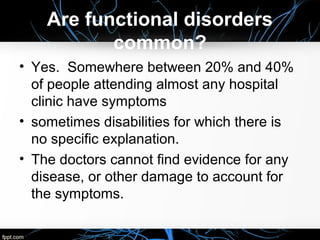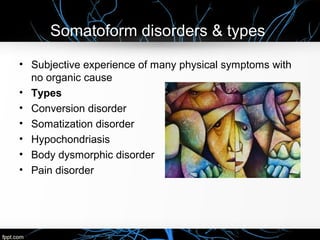Functional disorders manifest as physical discomfort without identifiable organic disease, affecting daily life and often linked to psychological causes. Symptoms can include headaches, fatigue, and various pains, with risk factors including stressful life events and potential genetic predisposition. Treatment options range from cognitive behavioral therapy to medication, aiming to improve patients' quality of life despite the challenges these disorders present.




































